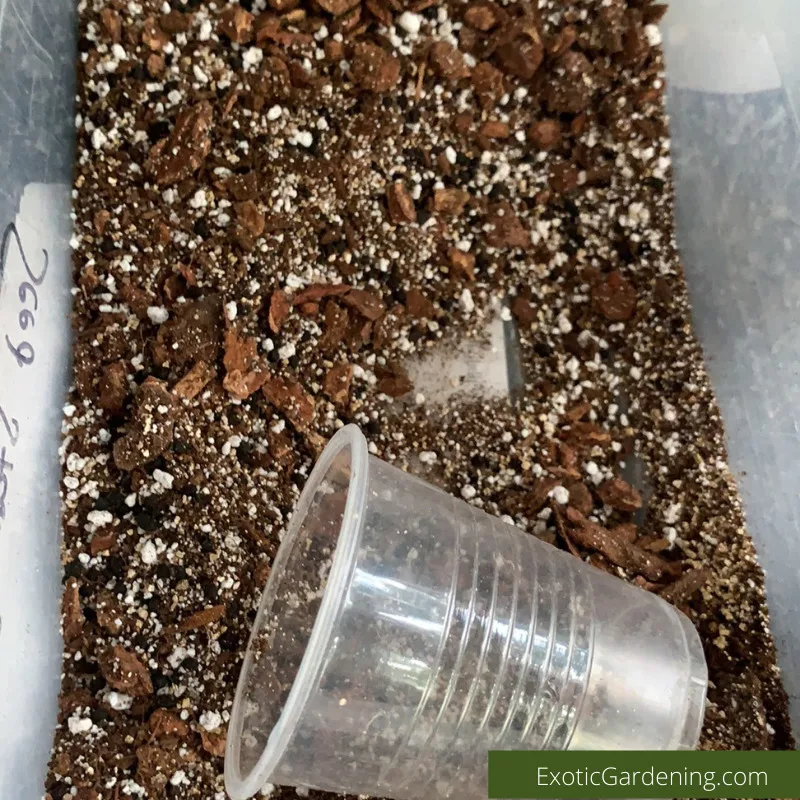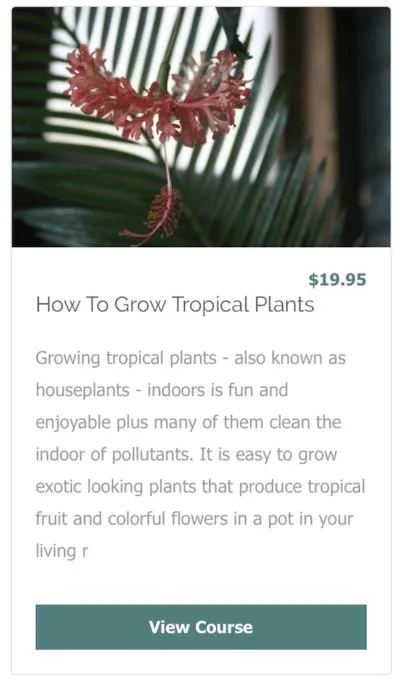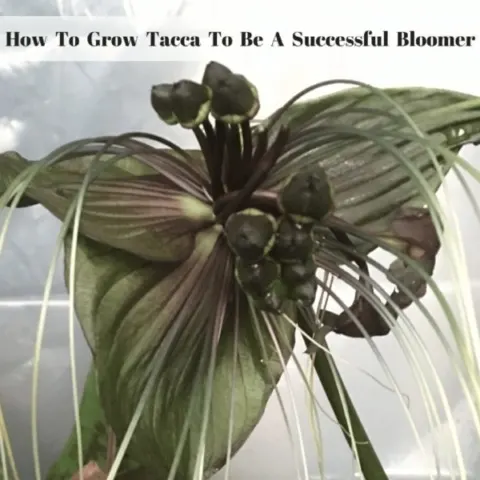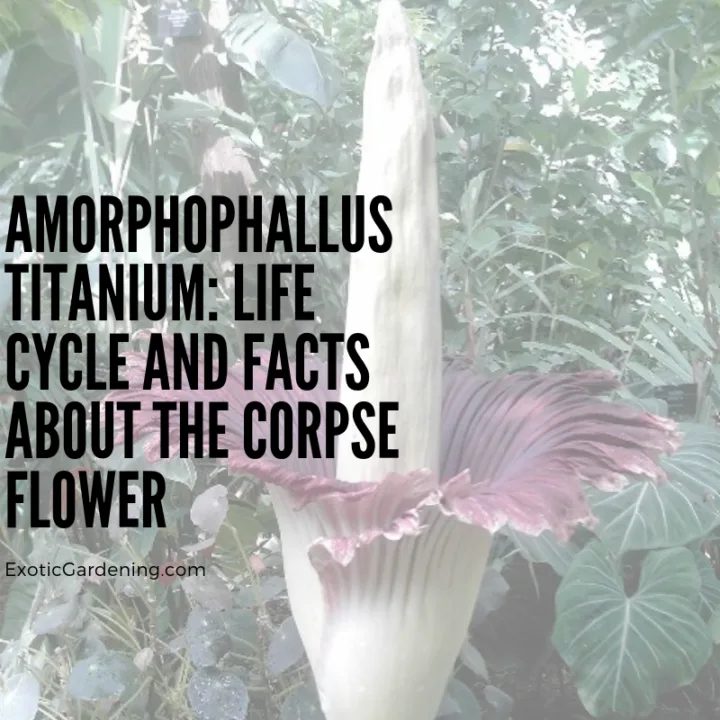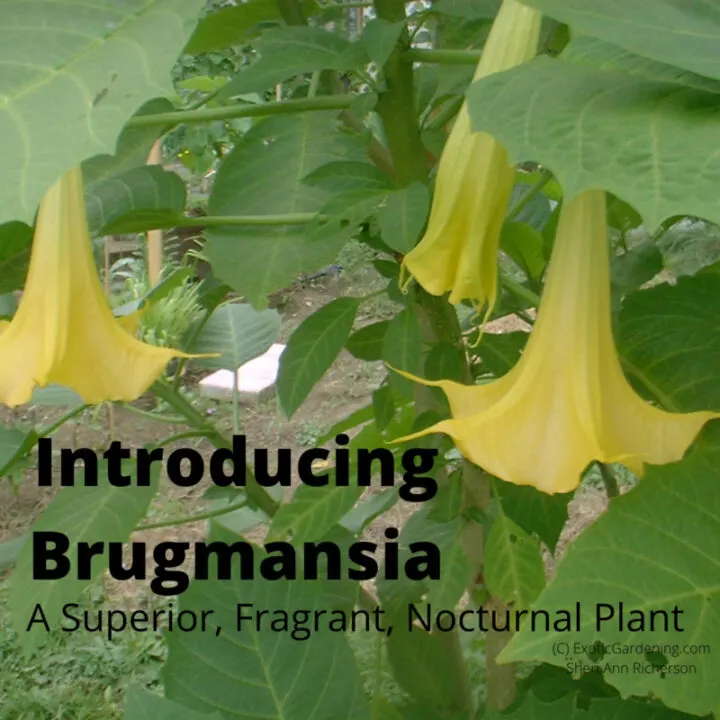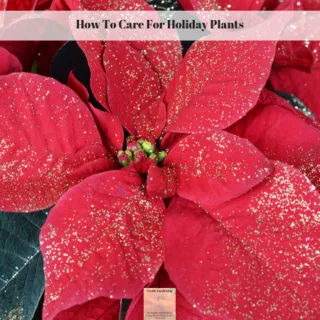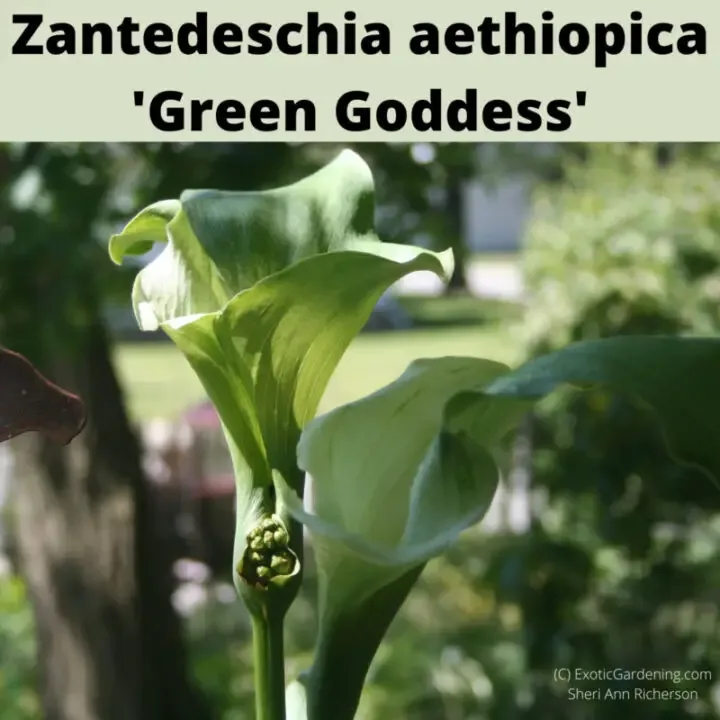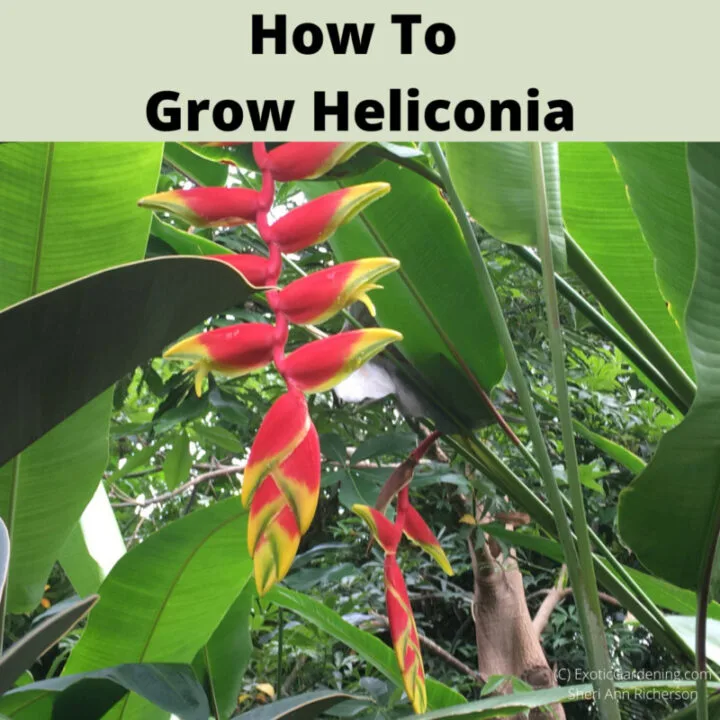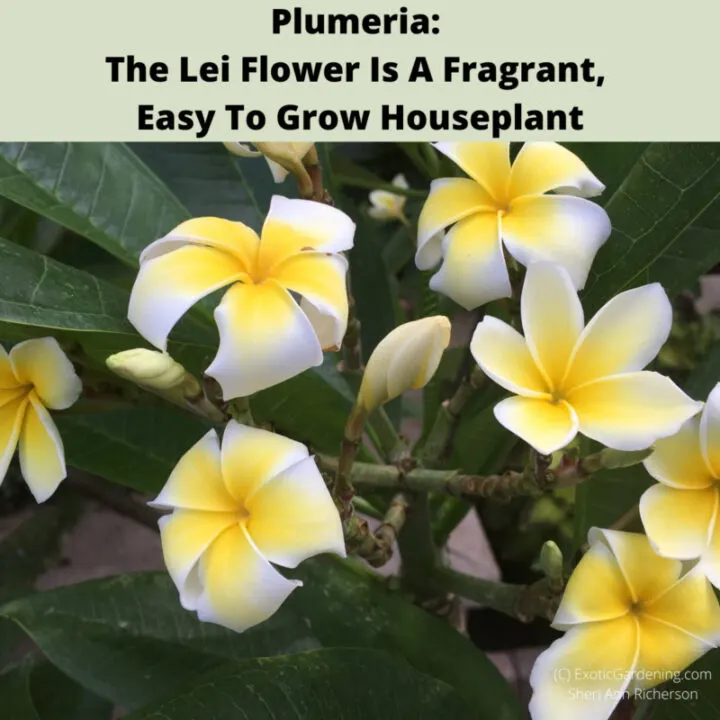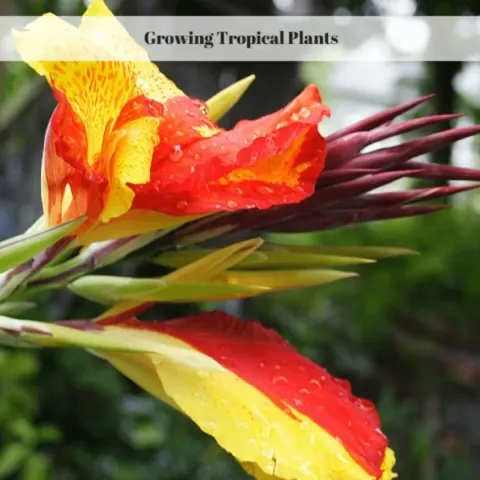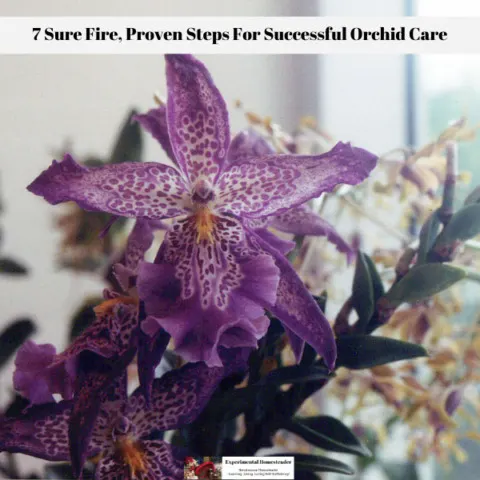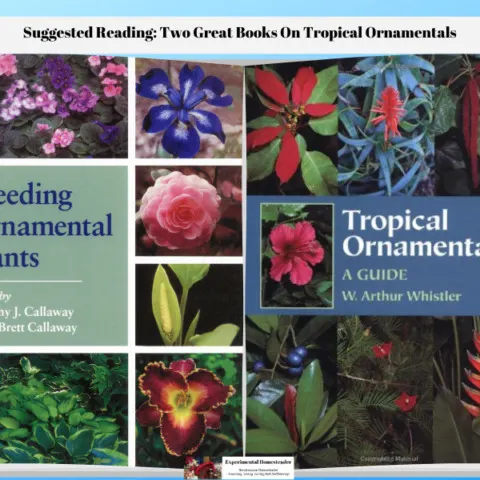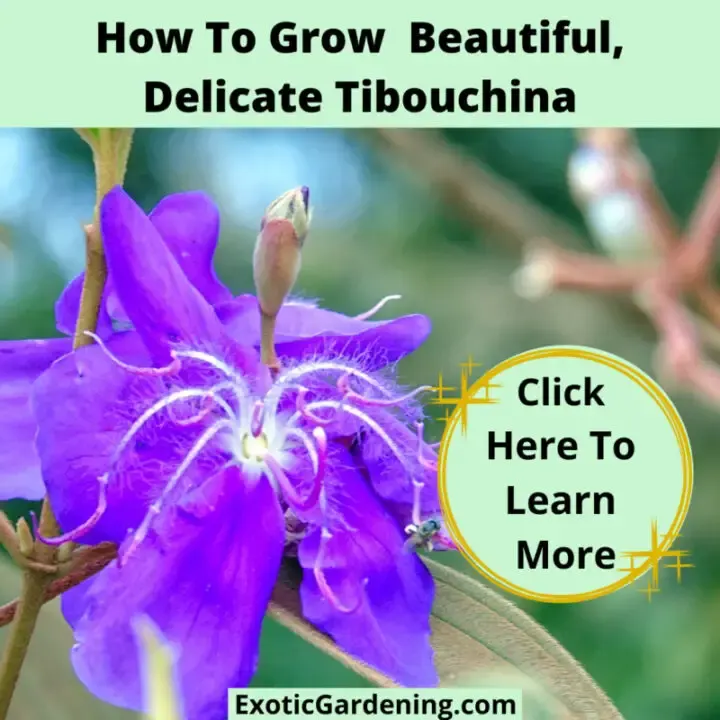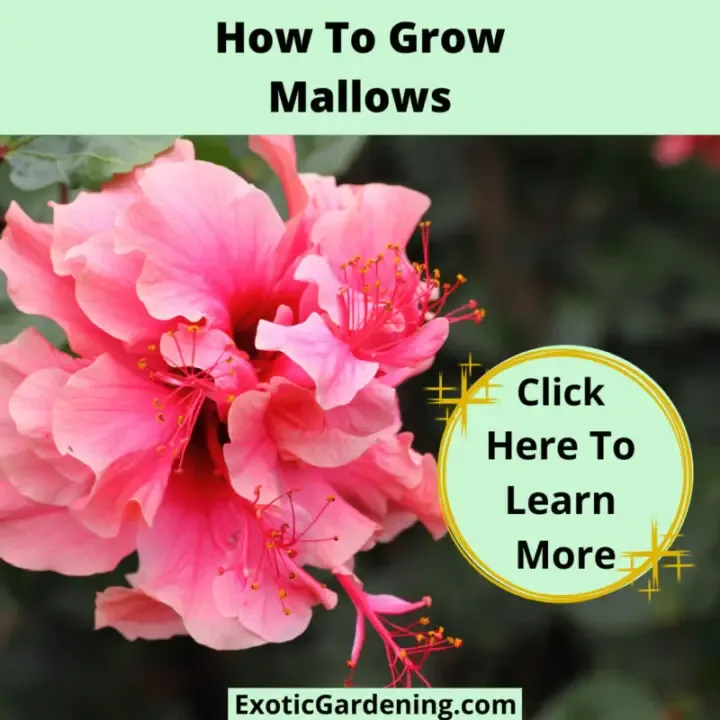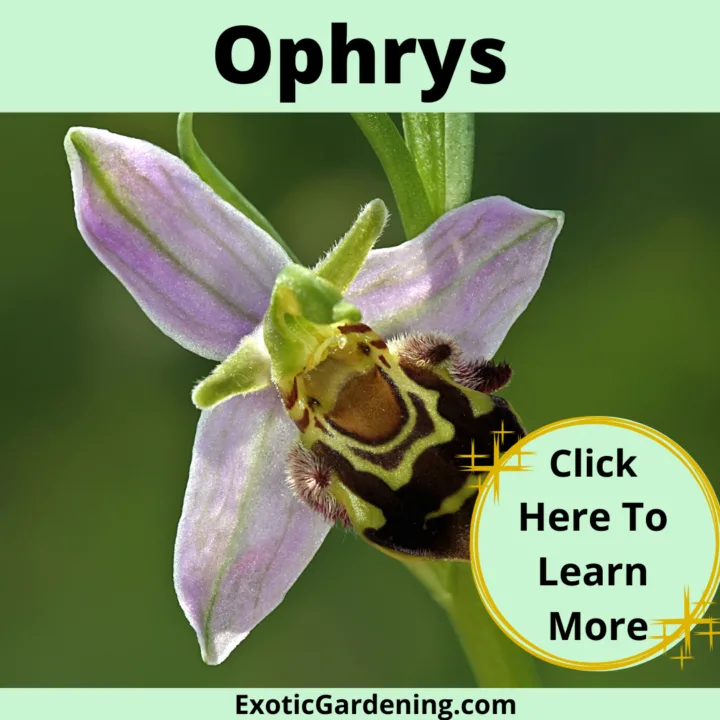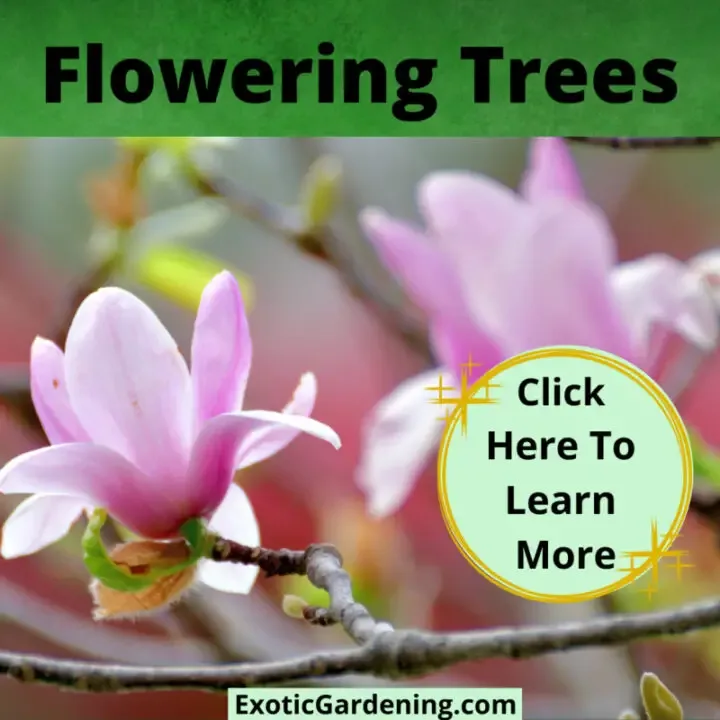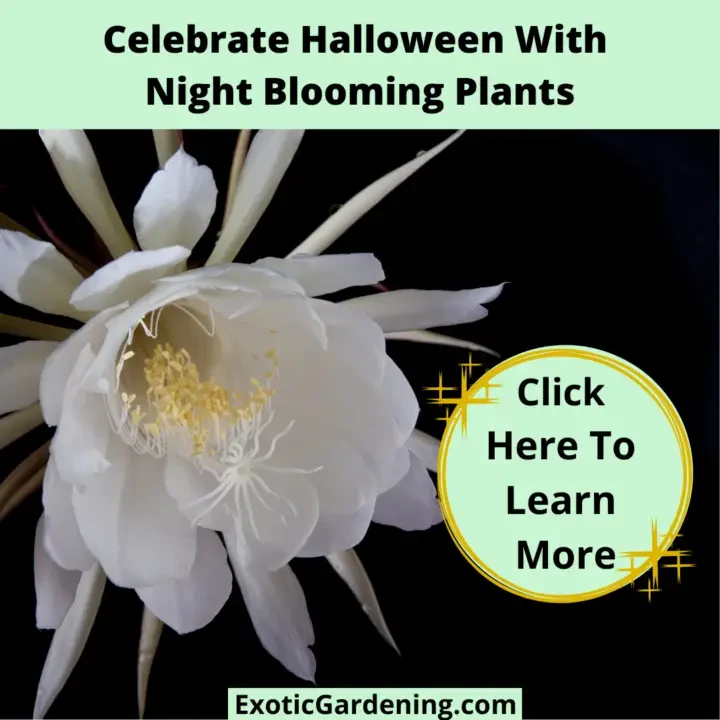If growing tropical bulbs in containers outdoors in the summer is a bit of a challenge to you, you are not alone.
While the growing conditions for tropical bulbs or even forcing bulbs indoors require one set of rules, the growing conditions outdoors require yet another set of rules.
Everything from water to soil to fertilizer must be dealt with, and adjusted to fit your particular growing environment.
Growing any plant in a pot can provide a bit of a challenge, even for the most experienced grower, but it can successfully be accomplished with a bit of knowledge.
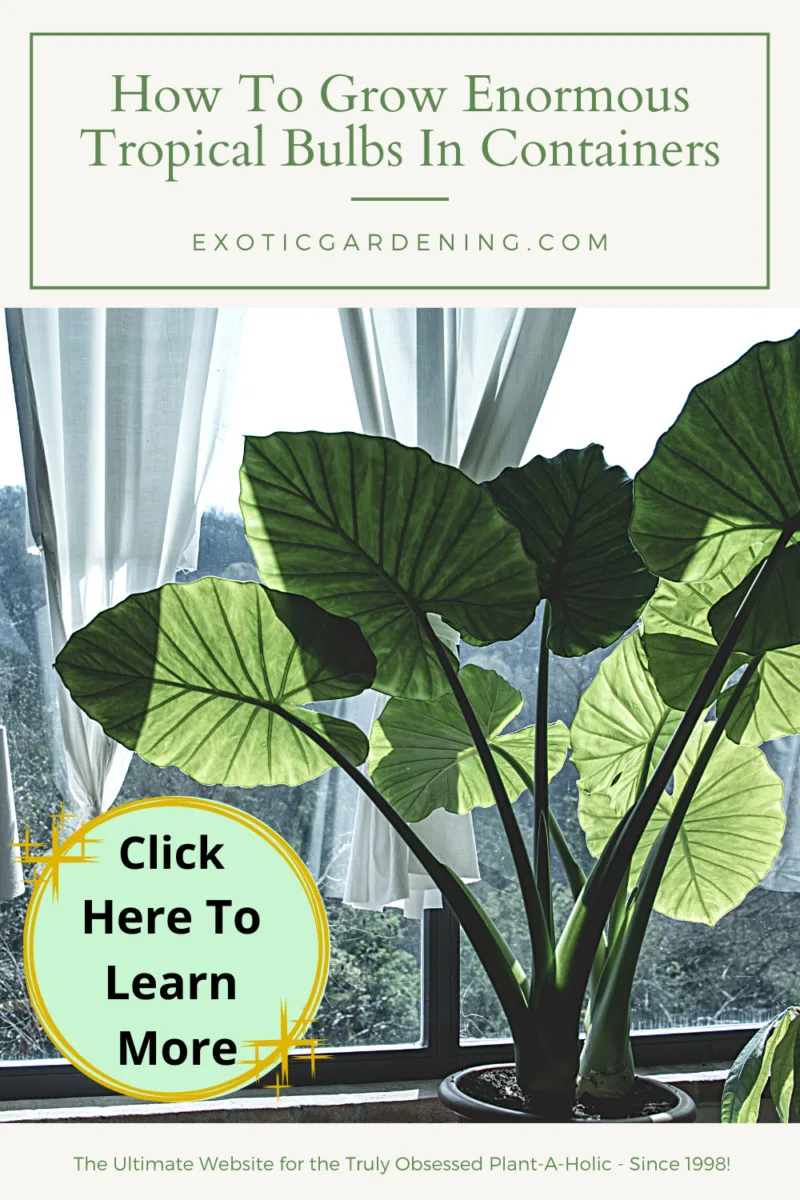
The Five Things You Must Do For Tropical Bulb Success
- Plant them in containers in well-drained soil.
- Provide adequate water during the growing season.
- Keep them warm and dry during dormancy.
- Apply a long-lasting time release fertilizer every spring and use a liquid fertilizer throughout the growing season.
- Prune containerized plants as needed to ensure healthy leaves and flowers.
Use The Right Soil For Tropical Bulbs In Containers
Let´s begin by taking a look at the different choices available for soil.
While a heavier potting soil is great for holding water, what about those times of heavy rainfall?
Even with drainage holes in your container and the right size pot, potting soil tends to retain water and thus causes root rot and eventually will cause your bulb to rot, unless of course, you intend to cover or move your plant under these conditions.
For years, I preferred a soilless mix to grow my plants and bulbs in.
Not only does it allow the roots plenty of room to grow, but it also dries out fairly quickly, even with large amounts of rainfall.
The drawback to this type of mix is that you must water, sometimes daily.
Another favorite trick of mine was to mix ½ potting soil, ¼ vermiculite, and ¼ perlite and pot my plants up.
They did seem to fair ok, but I still preferred the soilless mix.
However I now make my own potting mix and adjust the ingredients to suit the type of plant I am growing.
This mix has worked great for cannas, bananas, elephant ears and more.
Here is what is in it:
- Peat moss - or seed starting mix depending on the quantity of soil I need.
- Perlite
- Vermiculite
- Fluval stratum
- Repti-Bark
Your growing environment will also affect your plants and the amount of care that they need.
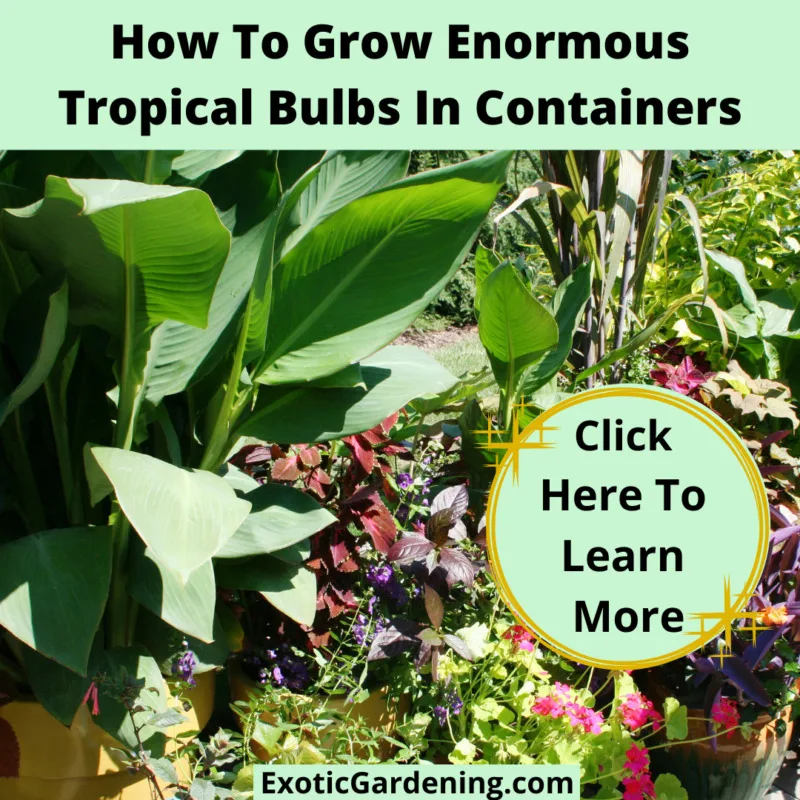
Tropical Plants Love To Be Watered
Let's face it, tropical plants love water.
Plants grown in containers need more water than those grown in the ground.
While I do not water my tropical plants every day, I do try to water every other day.
Don't stress this however because there have been times my tropical bulbs in containers did not get watered for a week.
While I do not recommend doing this on a regular basis, sometimes it's just not possible to water every few days.
The good news is unless you have extreme heat, the tropical bulbs are going to be fine.
When I do water I fill the container clear to the top and then allow the water to drain through.
I repeat this process two more times for each container grown plant.
What this does is flush any excess fertilizer out of the soil, helps to get fresh water which contains oxygen to the plants roots and makes sure the soil is fully saturated.
Watering during the early morning hours is recommended.
Evening watering is not recommended because it can encourage disease.
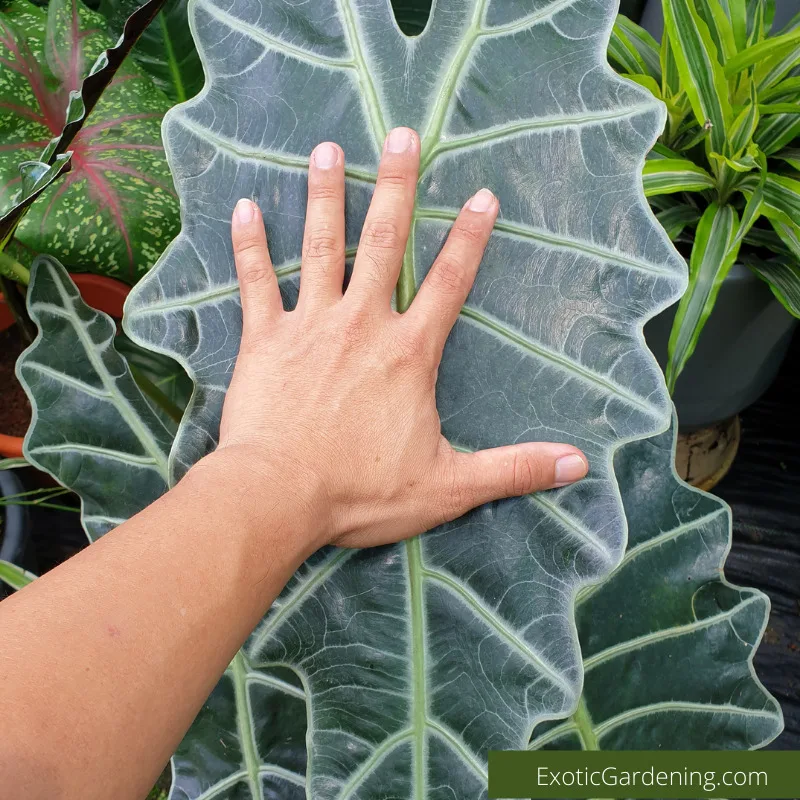
Tropical Bulbs In Containers Need Fertilizer
Fertilizer is a necessity if you truly want enormous leaves and tropical plants.
In the ground, a plant can absorb many things, but in a pot it will quickly absorb its nutrients.
Rather you use a liquid fertilizer or a time released fertilizer is completely up to your preferences and the time you have to tend to each individual plant.
The best method is actually to use both a time release fertilizer and a liquid fertilizer.
While I prefer to use a liquid fertilizer just because I like to spend time with each plant, I have learned that adding a time release fertilizer to the soil actually gets better results.
The plants can take up the nutrients as they need them and not rely on me to provide just the right amount of fertilizer.
I do still like to use a liquid fertilizer as directed on the fertilizer label, though typically at half strength.
This way I can spray the fertilizer on the leaves of the plant which results in quicker absorption.
While there is a possibility I could over fertilize, paying attention to the plant and backing off on the liquid fertilizer if I see signs of fertilizer burn is my personal choice.
It is hard to know when the fertilizer in the soil is used up and while time release fertilizers do give a recommended date to reapply them, you still do not know if the plant has used the fertilizer up faster.
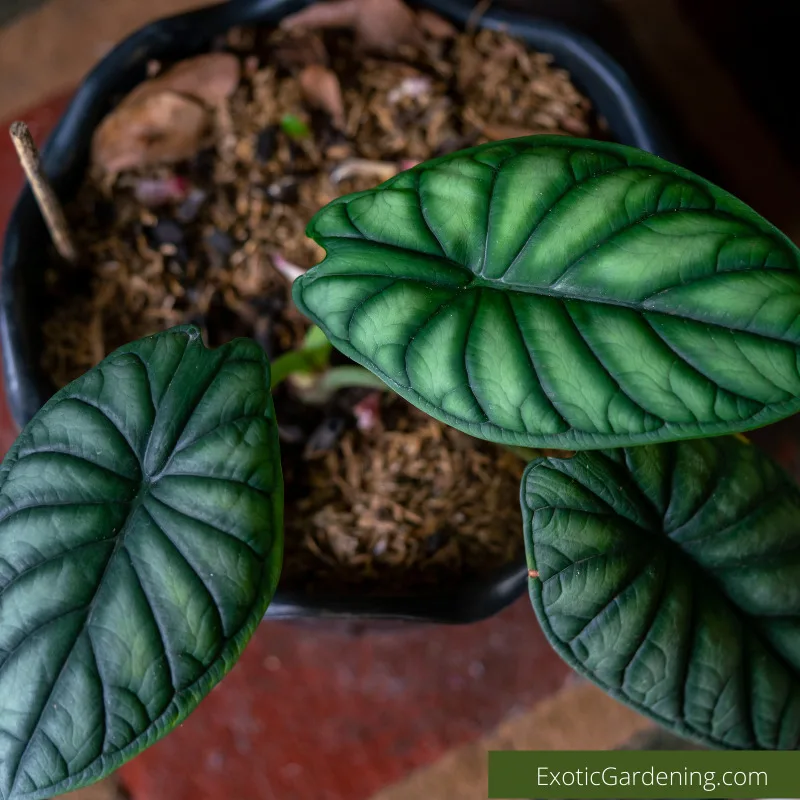
Move Your Tropical Bulbs In Containers Indoors And Outdoors
Although tropicals are known for surviving in hot, dry conditions, once you take them from their native environment into your own, you must adjust their care.
In the winter, most of us keep the same basic temperature in our houses, and of course, there is no wind...........but summer conditions include rain, wind, and sun, so we must condition the plants to stand up to these extremeties after they have been used to calm conditions.
Providing shelter in the first few weeks they are outdoors, or even providing stakes so that the plants cannot fall over works fairly well.
Another must is to keep an eye on them daily until you know just exactly which plant needs what when.
Another idea is to make sure the bulbs are just showing signs of life and then immediately move the containers outside or keep the bulbs dormant until you are ready to plant them in the container.
Many times bulbs will loose their initial leaves and have to re-grow them if they are moved from one condition to another during their growing period.
Sometimes it is just easier to allow the bulb to go dormant in the pot and store the whole thing over-winter.
I do remove any dead foliage and typically water a couple of times during the winter months when the bulbs are left in the container so the soil does not wick all the moisture out of the bulb and kill it.
Learning to grow tropical plants in pots can be very rewarding, and you will find once you have a routine down, very effortless.
Getting in the routine is the hardest part.
I know you will be glad you did once you try it though.
Flowering Tropical Plants
How To Grow Tacca To Be A Successful Bloomer
The black flowers intrigued me, but the bat plant comes in many colors - brown, white and even green! Learn how to grow tacca from seed to bloom!
Amorphophallus Titanium: Life Cycle And Facts About The Corpse Flower
Learn about the life cycle of the Amorphophallus titanium as well as how to propagate it and some fun facts about this unique corpse flower.
Introducing Brugmansia: A Superior, Fragrant, Nocturnal Plant
Brugmansia trees are highly fragrant, night blooming plants with trumpet shaped flowers. Learn how to care for your brugmansia.
How To Care For Holiday Plants
Have you ever wondered how to care for holiday plants such as the Poinsettia or the Christmas Cactus? If so, then check out this holiday plant care guide
Zantedeschia aethiopica Green Goddess
Learn how easy it is to grow Zantedeschia althiopica Green Goddess from seed by using the damp paper towel method plus seed to bloom time.
How To Grow Heliconia
Learn how to grow Heliconia. Proper plant care is important to keeping your Heliconia healthy and thriving.
Plumeria: The Lei Flower Is A Fragrant, Easy To Grow Houseplant
Learn how to care for your Plumeria in ground and in containers. Because of the winter dormancy period it is ideal for summer containers.
Growing Tropical Plants
The key to successfully growing tropical plants is learning about them. Growing tropical plants is easy once you know their basic needs.
7 Sure Fire, Proven Steps For Successful Orchid Care
Successful orchid care is pretty easy once you understand the seven basic steps the plant needs to thrive in your home environment.
Easy Exotic Houseplants: Tropicals That Thrive Indoors in Containers
Tropical plants are the most beautiful, easy to grow indoor houseplants. Start growing exotic houseplants today that fruit and flower!
Coral Vine (Antigonon leptopus): A Beautiful Yet Invasive Climbing Vine
Explore the allure and challenges of Antigonon leptopus, a captivating climbing vine, and its impact on local ecosystems.
Suggested Reading: Two Great Books On Tropical Ornamentals
Learn about two books on tropical ornamentals. Breeding Ornamental Plants and Tropical Ornamentals are a must read for those who love plants.
How To Grow Beautiful, Delicate Tibouchina
Tibouchina are beautiful but delicate plants with gorgeous purple flowers and a velvet like foliage. They can be bushes or vines.
How To Grow Mallows
Learn how to grow mallows, a Malvaceae family which includes some of the most popular plants for the home garden, Hibiscus.
Ophrys
Ophrys are a rare group of terrestrial Orchids that grow in the wild and look like insects, especially bees, hence their common name.
Flowering Trees For Fragrance And Beauty
Flowering trees add beauty and fragrance to the garden. There are ones for tropical climates, cold climates and even indoor gardens.
Expert Advice On How To Grow Beautiful Allamandas
Allamandas come in a range of colors, are easy to grow and do well in containers. They also overwinter well indoors in cold climates.
Expert Advice On How To Grow Oleanders
Learn how to grow Oleanders as well as propagation methods. Learn about the toxicity of this plant as well.
Rafflesia Arnoldii
Rafflesia arnoldii produces the largest flower in the world yet this colorful, but strange plant is rare and grows on the rainforest floor.
Tropical Plants In Cold Climates: Overwinter Tropical Plants Or Start Over Each Year From Seed
Tropical plants grown in cold climates look great during the summer outside but many make great houseplants in the winter.
Celebrate Halloween With Night Blooming Plants
A cool way to decorate and celebrate Halloween is with night blooming plants! Create a spooky garden that glows in the dark this year!
How To Grow Tropical Plants
Growing tropical plants - also known as houseplants - indoors is fun and enjoyable plus many of them clean the indoor of pollutants.
It is easy to grow exotic looking plants that produce tropical fruit and colorful flowers in a pot in your living room or office.
Many of these plants are easy to start from seed and I share with you five plants that I recommend for indoor growing.
I also share with you why growing your own tropical fruit saves money.
In this video you will learn:
How to bring tropical plants indoors at the end of summer
How to grow tropical plants indoors
How to protect and overwinter tropical plants outdoors in cold climates
How to propagate tropical plants
How to water tropcial plants
How to grow topical plants in a greenhouse

